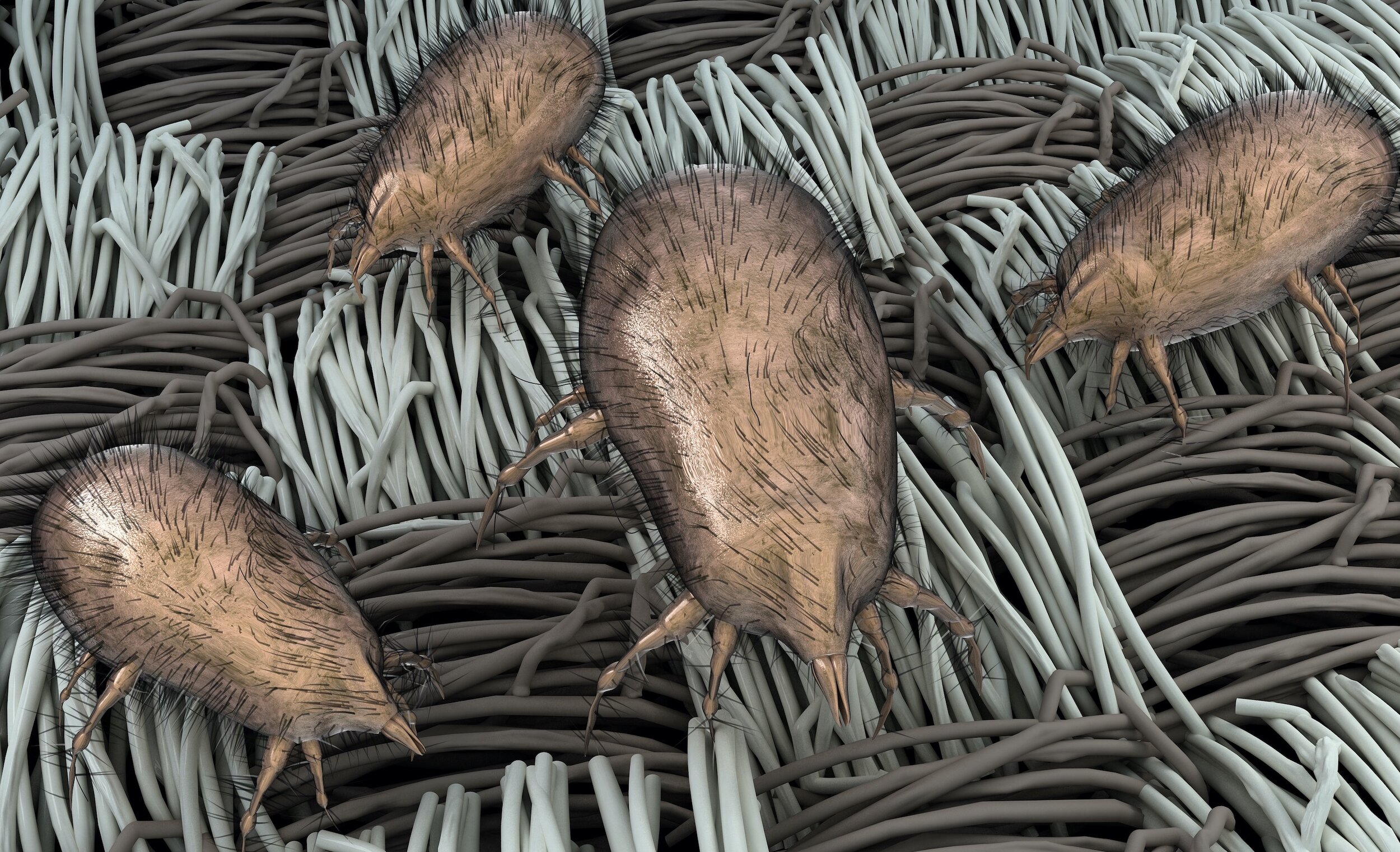
Dust Mite Allergy
The house dust mite is a an arachnid not visible to the naked eye. Measuring approximately 0.4 by 0.3 millimeters on average dust mites live in upholstered furniture, carpets, and, most frequently, bedding.
What Is Allergy to Dust Mites?
Allergy to dust mites, a type of allergic rhinitis and atopic disease, is an immune system reaction to proteins in the droppings of dust mites. These microscopic creatures thrive in household dust. This allergy often manifests similarly to other respiratory allergies, influencing the quality of life and contributing to the development or worsening of asthma.
Biology of Dust Mites
Dust mites, belonging to the pyroglyphidae family, are microscopic, eight-legged creatures not visible to the naked eye. They feed on human skin flakes and flourish in warm, humid environments. Their presence is ubiquitous but not necessarily indicative of poor hygiene.
Causes of Allergy to Dust Mites
The primary cause of dust mite allergy is an immune response to proteins found in the excrement and body fragments of dust mites. These allergens are inhalable and, when inhaled by someone with a predisposed immune system, trigger allergic reactions.
Signs and Symptoms of Dust Mite Allergy
Symptoms of dust mite allergy vary but typically include:
Nasal Symptoms: Sneezing, runny or stuffy nose, postnasal drip.
Ocular Symptoms: Red, itchy, or watery eyes.
Respiratory Symptoms: Coughing, wheezing, shortness of breath, chest tightness (particularly in asthmatic patients).
Skin Reactions: Eczema or atopic dermatitis.
Sleep Disturbances: Due to respiratory distress or nasal congestion.
In asthmatic individuals, exposure to dust mites can exacerbate symptoms.
Risk Factors of Allergy to Dust Mites
Several factors increase the risk of developing a dust mite allergy:
Genetic Predisposition: A family history of allergies or asthma.
Exposure Level: High levels of exposure to dust mites, especially in humid environments.
Age: Common in children and young adults.
Environmental Conditions: Living in environments with high humidity and limited ventilation.
Existing Allergic Conditions: Those with other allergies or asthma are at higher risk.
How Is Dust Mite Allergy Diagnosed?
Diagnosing a dust mite allergy involves a combination of a clinical history, physical examination, and allergy testing:
Medical History and Physical Exam: Assessment of symptoms and environmental factors.
Skin Prick Test: Introduction of a tiny amount of dust mite allergen into the skin to check for a reaction.
Specific IgE Blood Test: Measurement of the immune system's response to dust mite allergens through the level of specific IgE antibodies.
Treatments for Dust Mite Allergy
Treatment of dust mite allergy focuses on symptom management and reducing exposure to allergens:
Allergen Avoidance: Strategies to reduce dust mite exposure in the home.
Medications: Antihistamines, nasal corticosteroids, leukotriene inhibitors, and decongestants to manage symptoms.
Immunotherapy: Allergy shots or sublingual tablets to gradually desensitize the immune system.
Nasal Irrigation: Use of saline solutions to clear nasal passages.
Management of Comorbid Conditions: Treating related conditions like asthma or eczema.
Preventive Measure to Avoid Dust Mite Allergy
To reduce the risk of developing or exacerbating a dust mite allergy, the following preventive measures can be taken:
Control Humidity: Maintain indoor humidity below 50%.
Use Dust-Proof Covers: Encase mattresses and pillows in allergen-impermeable covers.
Frequent Washing: Regularly wash bedding in hot water.
Remove Carpeting: Especially in bedrooms, or use low-pile rugs.
Regular Cleaning: Using a vacuum cleaner with a HEPA filter.
Reducing Clutter: Minimizes dust accumulation.
Air Filtration: Use HEPA filters in air conditioning systems.
Avoiding Upholstered Furniture: Where dust mites can accumulate.
Environmental Modifications
Ventilation: Ensuring adequate ventilation to reduce humidity and allergen levels.
Choosing Appropriate Furnishings: Selecting furnishings that are less likely to harbor dust mites.
Contact Dr. Lubitz Today and Arrange a Consultation
If your asthma or allergies are getting you down, don’t suffer needlessly. Same-day appointments are available. We have multiple offices throughout Manhattan.
